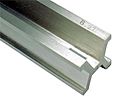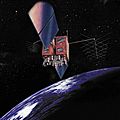Metre facts for kids
A metre (pronounced "MEE-ter" in the US) is a basic way to measure how long something is. It's the main unit of length in the SI system, which is used by most countries around the world. The short way to write metre is m.
The idea of the metre first came from the French Revolution. It was supposed to be one ten-millionth of the distance from the Earth's equator to the North Pole. This was measured along a special line that goes through Paris.
Today, the metre is defined in a very precise way. It is the distance that light travels in a vacuum (empty space) in a tiny fraction of a second. This fraction is 1/299,792,458 of a second. This modern definition makes sure the metre is always the same length, no matter what.
Metre and Other Measurements
In some countries, like the United States, people use imperial measurements. These include inches, feet, and yards.
Here's how a metre compares to these units:
- One yard is about 0.9144 metres.
- A metre is a bit longer than a yard, about 1.0936 yards.
- A metre is also about 3.281 feet long.
- It is close to 39.37 inches. This is a little more than three feet.
Smaller and Larger Metres
The SI system uses prefixes to show parts or multiples of a metre. This makes it easy to talk about very small or very large distances.
Here are some common units based on the metre:
- Millimetre (mm): There are 1,000 millimetres in 1 metre. A millimetre is very small, about the thickness of a credit card.
- Centimetre (cm): There are 100 centimetres in 1 metre. A centimetre is about the width of your fingernail.
- Decimetre (dm): There are 10 decimetres in 1 metre.
- Kilometre (km): There are 1,000 metres in 1 kilometre. Kilometres are used to measure long distances, like the distance between cities.
There are also units for even smaller or larger distances:
- Micrometre (μm): This is 1,000,000 times smaller than a metre. It's used for things like bacteria.
- Nanometre (nm): This is 1,000,000,000 times smaller than a metre. It's used for very tiny things, like parts of a computer chip.
- Gigametre (Gm): This is 1,000,000,000 metres. It's used for huge distances, like in space.
Images for kids
-
Triangulation near New York City, 1817.
-
Swiss baseline measurement with Ibáñez apparatus in 1880.
-
Closeup of National Prototype Metre Bar No. 27, made in 1889 by the International Bureau of Weights and Measures (BIPM) and given to the United States, which served as the standard for defining all units of length in the US from 1893 to 1960
See also
 In Spanish: Metro para niños
In Spanish: Metro para niños











